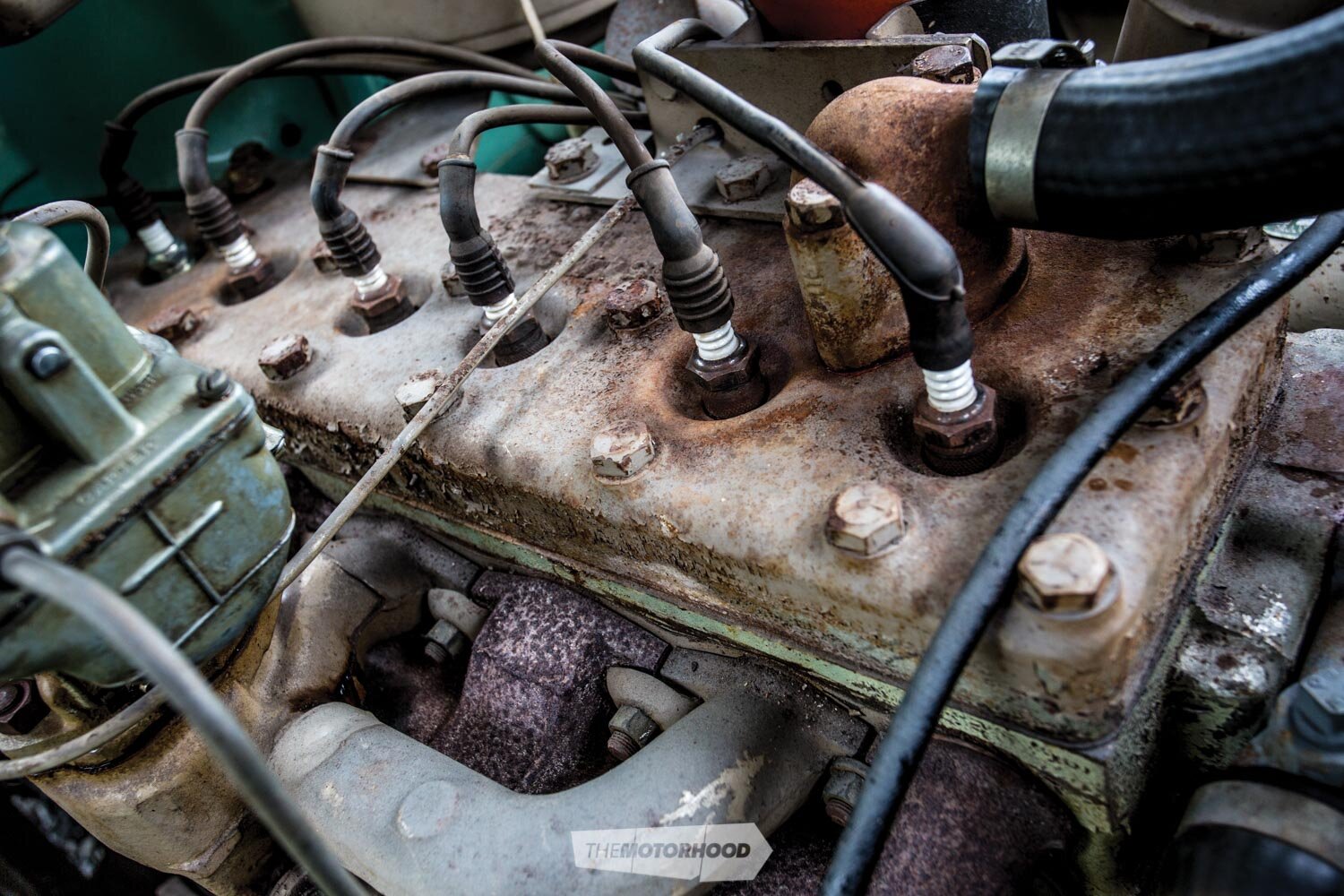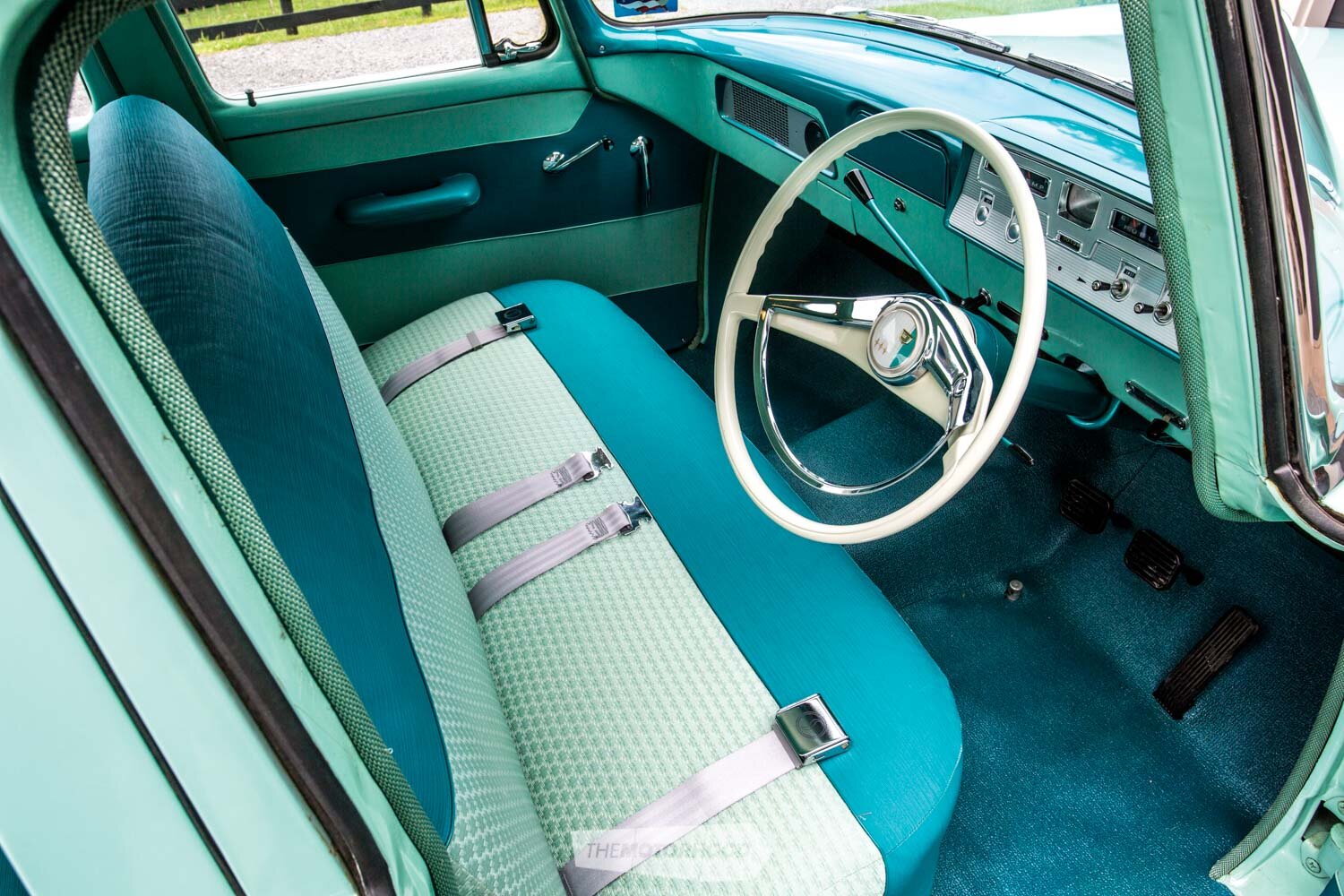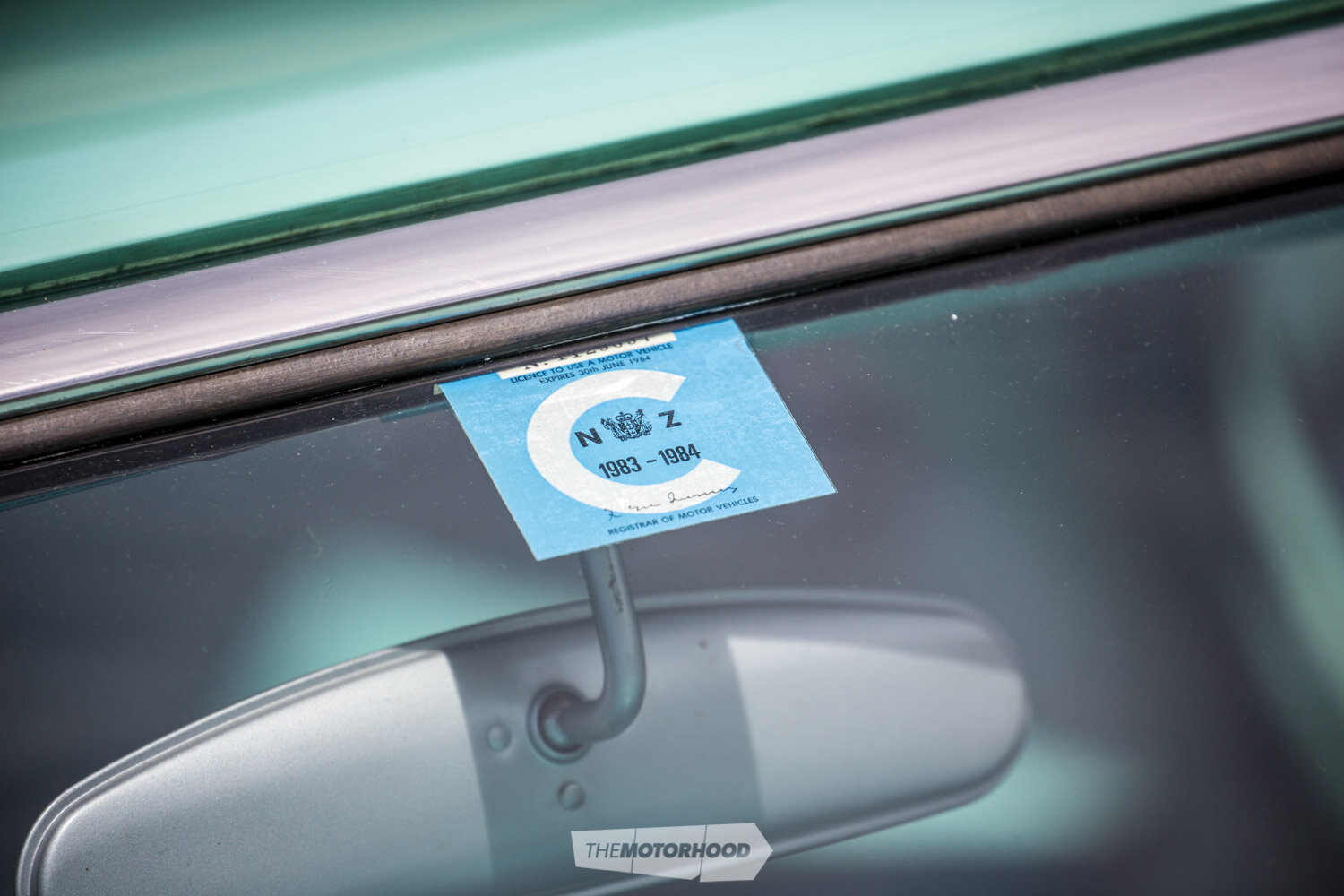It’s hard to believe that this 1958 Studebaker Champion has clocked just 128 miles since new …

In 2014, the Ellerslie Classic Car Show introduced the Survivors Class into the Intermarque Concours d’Elegance competition to be judged alongside the Masters Class and Teams Event entrants.
The idea of including a Survivors Class section for unrestored vehicles had been discussed at length by the event organizing committee for a few years, and, after a remit was passed at the AGM in 2013, the green light was given to proceed.
The criterion for any car club member to enter their car into the competition under this category was quite simple — the more original the better, eligible vehicles being those that are predominantly original, unrestored, and not modified in any way; in other words, ‘survivors’. These cars wear their original, factory-applied paint; some are incredibly well preserved, while others show varying degrees of visible patina. Interiors will have been well cared for, perhaps complete with threadbare carpets, and, under the bonnet, a nicely preserved engine bay, complete with the original motor, as well as all related drivetrain components. These cars are judged on originality, age, condition, preparation, and history.
This year’s winner, by a clear margin, scoring 909 points out of a possible 930, was Stuart Bilbrough’s unbelievably original 1958 Studebaker Champion. After being disqualified from last year’s event for not displaying a current registration and warrant of fitness (WOF), the win this year was a just reward for the laborious process of getting the Stude road legal and ready for the show.


GET ONE WITH A GREAT STORY
Stuart’s uncle, Bill Clark, owned and restored the 1935 Alfa Romeo P3 raced by Tazio Nuvolari, which Stuart remembers well in the garage full of other classics in Tai Tapu, just out of Christchurch. Bill was also a founding owner of Auto Restorations in Christchurch. Stuart clearly recalls his uncle saying, “If you are going to own a classic, try and get one with a great story”.
Stuart’s first real classic was a 1974 Citroën DS23. He purchased the car in 1999, sold it in 2006 (before heading abroad for work), and then bought it back seven years later off the chap who he’d sold it to (Rosco Pennell from Kaitaia). Unfortunately, in June 2016, his beloved DS23 was written off in a bizarre accident, the driver of another car falling asleep at the wheel while driving through Huntly and crashing into it. As luck would have it, Stuart had just stepped out of the car to get a mussel fritter from one of the roadside food caravans, and his decision to sit by the Waikato rather than get back into the car was indeed a fortuitous choice.
When Stuart saw a Newshub story in July 2016 about a rather special, low-mileage Studebaker that was about to go up for auction, and with his uncle Bill’s advice repeating in his ear, Stuart thought, why not have a crack? In hindsight, Stuart admits that, at the time, it was possibly classic car–loss grief rather than an astute investment decision that was the real reason for the opportune bid. He’d just had the Citroën insurance payout deposited, which went a long way towards a modest bid on the 1958 Studebaker Champion with only 74.6 miles (120km) on the clock.



TIME CAPSULE
“The most unique Studebaker in the world” stated Tony Ford, former joint owner of the 1958 Studebaker Champion between 1993 and 2016. This is a very bold statement that you would expect to be easily refuted—easily refuted, that is, if it were not for the fact that this 60-year-old piece of iconic Americana’s incredibly low mileage was genuine.
It has been kept in near-pristine condition and is a perfect time capsule of production quality — or lack thereof — of the time.
The story of the rock ’n’ roll–era 1958 Studebaker Champion begins with its order, directly from the South Bend, Indiana, production line, in early 1958. The production order obtained from the Studebaker National Museum in South Bend shows the initial order was written on February 12, 1958. The final assembly date of this right-hand-drive Champion was recorded as March 7, 1958.
When the Champion was first registered on June 25, 1958, it was to Vincent Kilburn Roberts, a plumber from Kilbirnie, Wellington. It was reportedly a honeymoon gift for Vincent’s wife-to-be. There are no recollections of what happened between Vincent and his soon-to-be bride, but the marriage did not take place. Sadly, the car was parked away in mint condition and unused for the next 26 years, some say as a monument to the bride and reminder of lost love.

The Champion was periodically maintained by a local mechanic called Henricus van Der Storm. A letter written by Henricus records some of the history over this 26-year period. Vincent was said to have become a recluse and refused to let the public see the Studebaker.
In 1974, the car had only completed 32 miles (51.4km), which were believed to be the original delivery miles. At this time, Henricus towed the car to his garage and nursed the long-idle car back to health, including giving the Stude a WOF and a road test. On delivery back to Vincent, the car’s mileage was 64 miles (103km). In 1984, Henricus was once again asked to complete maintenance on the Stude, but this time in Vincent’s garage. Only one additional mile was added post a very short road test.
The Studebaker Champion was then put up for sale. Vincent, then over 70 years of age, was to retire to Kerikeri in Northland and bid farewell to his near-new Stude. A deal was brokered on Vincent’s behalf by a Mr Cress Thirkell, and the Stude was sold to Tony Edwards, a car dealer from Wellington, who planned to hold on to the car as an investment.


However, after less than a year had passed, he’d changed his mind, advertised this unique classic in Vehicle, the magazine of the New Zealand Motor Vehicle Dealers Institute and subsequently sold the Stude to Henshaw Motors in Timaru, which put the car on display in its showroom. The mileage at this point was only 71 miles (114km).
At the time, the new owners, Keith White and Roger Patterson, of Henshaw Motors, were keen to raise the Studebaker Champion’s profile. A Timaru Herald article dated March 25, 1985 documented the visit by the then-president of the US National Studebaker Owners Club and relative of the defunct Studebaker motorcar family Carroll Studebaker. The local rag quoted Mr. Studebaker as saying, “It’s priceless!”
A letter by Mr Studebaker notes the lengths the men at Henshaw Motors went to ensure that there was a visit. This included chartering a private plane from Christchurch to Timaru for Mr Studebaker and his wife, Verneda. On arrival, three reporters from different local newspapers were there to interview Mr Studebaker.
Around 1988, the Studebaker was moved to the Queenstown Motor Museum, which has long since closed, and put on display. Henshaw Motors eventually sold the Studebaker through its contacts at the Queenstown Motor Museum to an unrecorded party in Wellington. The Studebaker was now deregistered, which meant that official vehicle ownership records were not held.

Which brings us to July 2016, when Stuart Bilbrough purchased the Studebaker with its 74.6-mile (120km) mileage. Since then, Stuart has gently nurtured his prized possession back to life and its original unrestored glory.
By mid 2017, the Champion had been re-registered and given approval to retain the black plates. The Champion has also been given a clean WOF and is again legal to drive the roads of New Zealand … even if this is only a very few miles now and then.
This may or may not be the most unique Studebaker in the world, but it is undeniably a very, very original 60-year-old classic!
WHAT NOW?
Stuart’s not too sure. The low mileage is what makes this Studebaker unique. In fact, it is probably the lowest mileage 60-year-old Studebaker in the world, and perhaps of any marque for that matter! He’s considered loaning the car to a museum. MOTAT said it’d get back to him if it had a specific automotive exhibition, while the majority of car museums throughout New Zealand seem to be personal car collections.
The other option is to simply drive it, but Stuart just can’t bring himself to do that and grants that he’s just the custodian, rather than the owner, for the current period of its interesting Kiwi history.
Stuart does miss the pure pleasure of driving his dear ol’ DS23. Although keeping the ’58 Champion and buying another drivable classic would seem a possible option, albeit one fraught with material risk, Stuart admits that he really doesn’t want to end up like ’ol Vincent Roberts did in 1958!









